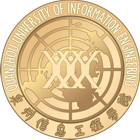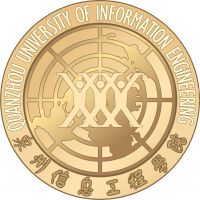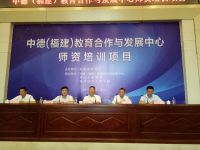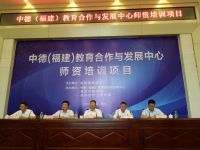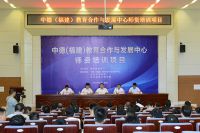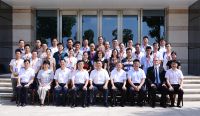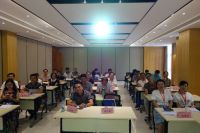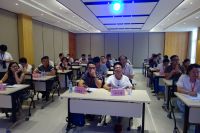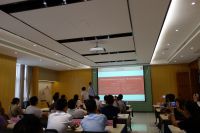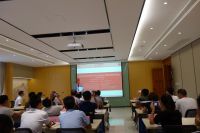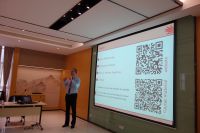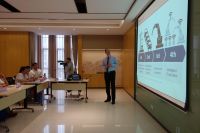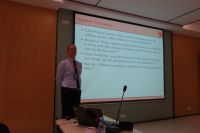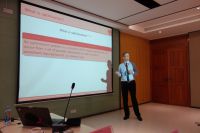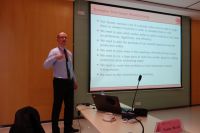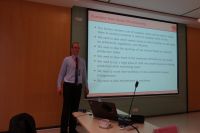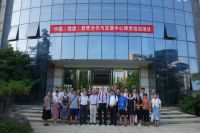Today, I had the great pleasure of teaching my short course Metaheuristics for Smart Manufacturing [智能制造的元启发式算法] at the Quanzhou University of Information Engineering [泉州信息工程学院] in Quanzhou city [泉州市] in the Fujian province [福建省] as part of the 2018 Teacher Training Program of the Sino-German Center for Education Cooperation and Development of the Fujian Province [中德(福建)教育合作与发展师资培训项目] with the topic "Intelligent Manufacturing". The course was given as two 2-hour lectures to an audience of about 30 key teachers from more than 20 higher vocational colleges in the province who mainly specialized in the field of mechanical engineering.
Giving this course in Quanzhou was a really great experience. The audience was very keen and followed my material very well, with the help of an excellent translator. We started the course with an introduction of the basic concepts of what optimization is and how it is necessary for intelligent production. We then approached the structure of optimization problems on the example for a real task in smart manufacturing, namely the Job Shop Scheduling Problem (JSSP). Here, the goal is to assign production tasks to machines in such a way that they can finish fast. After we discussed the general concepts of search and solution space as well as objective function based on this real example, we moved on to how to solve such problems after the lunch break. We began with the most trivial approach, randomly sampling solutions. After discussing this trivial algorithm and its shortcomings, we moved on to stochastic local search, namely hill climbing. During the short break in between the two topics, I got one of the most rewarding moments you can have as a teacher: an excited audience who that does not care about the break but instead wants to learn more about different aspects of the topic. Instead of taking a five minute break, we ended up having a thirty minute discussion! This was followed by the last tier of the class, population-based metaheuristics on the example of Evolutionary Algorithms. The goal of the lecture was to introduce the concept of optimization and the workings of the basic algorithms in the field by using concrete examples, clear visualizations, and also an actual implementation. It was the first time that I held this class, and I am very thankful for both the excellent translation support and for the audience who followed my talk very concentrated and with keen interest.
Besides the very rewarding teaching experience at the Quanzhou University of Information Engineering [泉州信息工程学院], the overall stay was very nice, too. Not only could I visit the very beautiful university campus, but also the famous ancient Kaiyuan Temple [开元寺] with its Zhenguo [镇国塔] and Renshou [仁寿塔] stone pagodas, the Qingyuan Mountain [清源山] with its great Laozi [老子] statue, and, of course, the wonderful beach near the city. I am thankful for this nice experience and the great support of the university staff in Quanzhou.
Course Material:
- Introduction to Optimization in the Context of Smart Manufacturing
- The Structure of Optimization
- The Randomly Sampling Algorithm
- The Hill Climbing Algorithm
- The Evolutionary Algorithm
- The Java Source Code for All Examples

